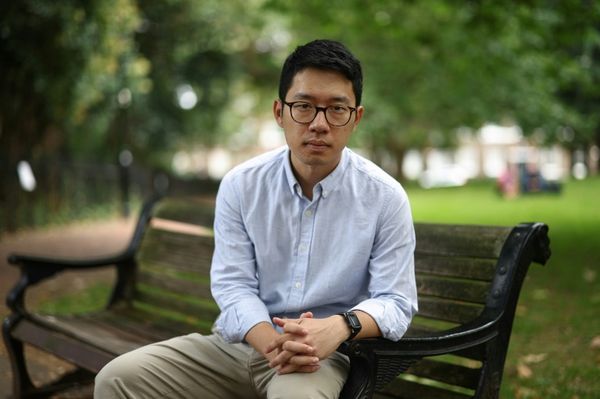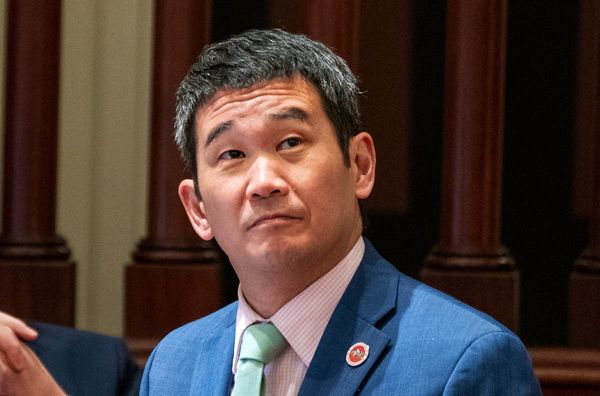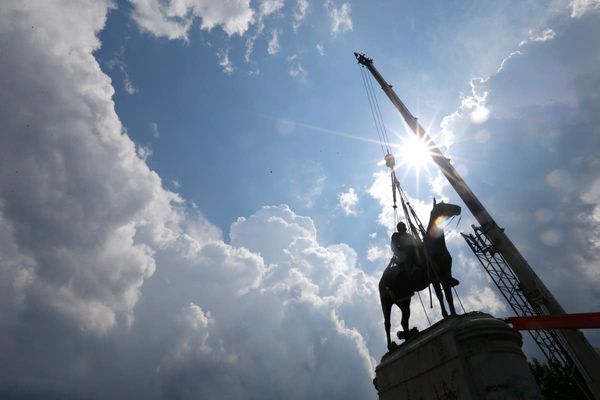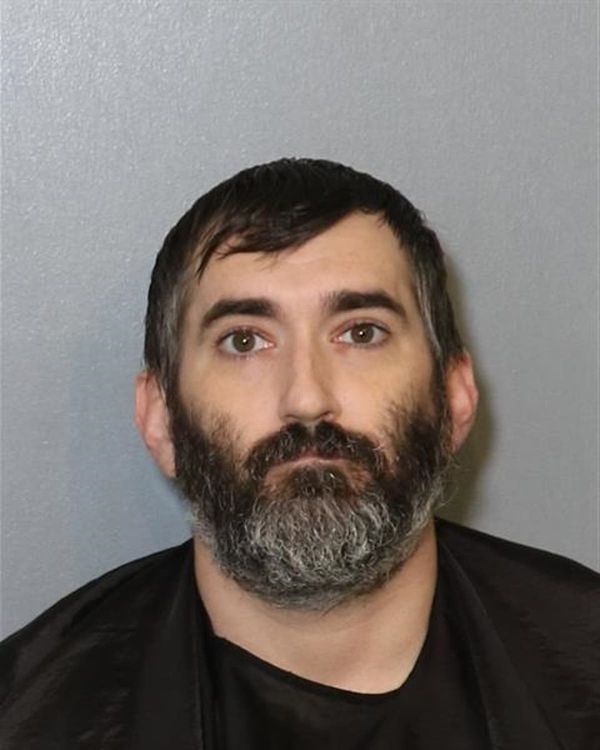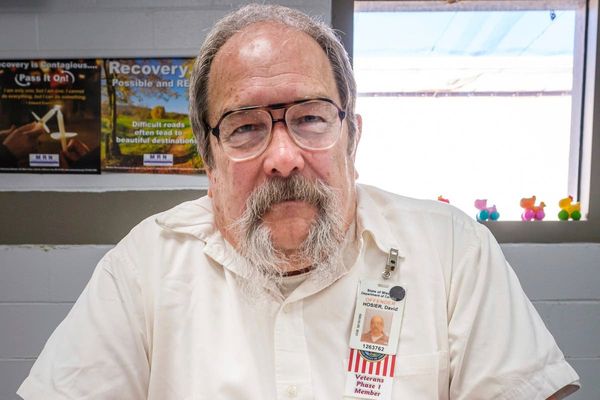
Auckland Mayor Wayne Brown is rubbing shoulders this weekend with mayors from cities like New Orleans, Santiago and Mombasa at the World Climate Industry Expo in Busan
Auckland Mayor Wayne Brown has touched down in Busan, South Korea on an independently-funded trip to participate in the World Climate Industry Expo.
It’s a fitting place for the expo, as the city of 3.5 million people is dabbling in a full menu of solutions for climate and infrastructure issues – problems that have been top of mind for Aucklanders in a year full of floods and infrastructure snafus.
Brown is joined by North Shore ward councillor Richard Hills and Auckland Council chief sustainability officer Matthew Blaikie on the invitation of the World Climate Expo, The South Korean Government and the Busan Metropolitan City Council.
READ MORE: * Wayne Brown softens on social service cuts * Wayne Brown’s conversion on the road to Victoria St
Brown is expected to present Auckland’s version of climate action while learning how other cities work to cut their own emissions.
On Friday he attended a mayor’s round table event, where he rubbed shoulders with the mayors of cities like New Orleans, Santiago, Casablanca and Mombasa.
Writing on Instagram, Hills said Busan was a “great place with phenomenal public transport, walking and cycling and some great environmental initiatives in place”.
Similarities with its sister city Auckland could make Busan a worthy role model as city planners and local politicians look to overcome the mounting issues facing the City of Sails.
Both cities have port-reliant histories and sub-tropical coastal locations vulnerable to sea level rise. Both cities have had to find a solution to transporting several million people across a steadily-widening urban sprawl.
Being located squarely in typhoon territory has seen Busan deal with many a flood over the years – something which may soon also be true of Auckland as climate change continues to create more turbulent weather patterns.
The cities share similar economic profiles, with between two-thirds to three-quarters of people employed in the service industry and around a fifth in goods-producing industries.
At the opening ceremony for the World Climate Industry Expo South Korean Prime Minister Han Duck-soo said Busan was transforming itself into a low-carbon green city which he hopes "will become a powerhouse to lead the consensus within the international community towards a global transformation”.
Port of Busan
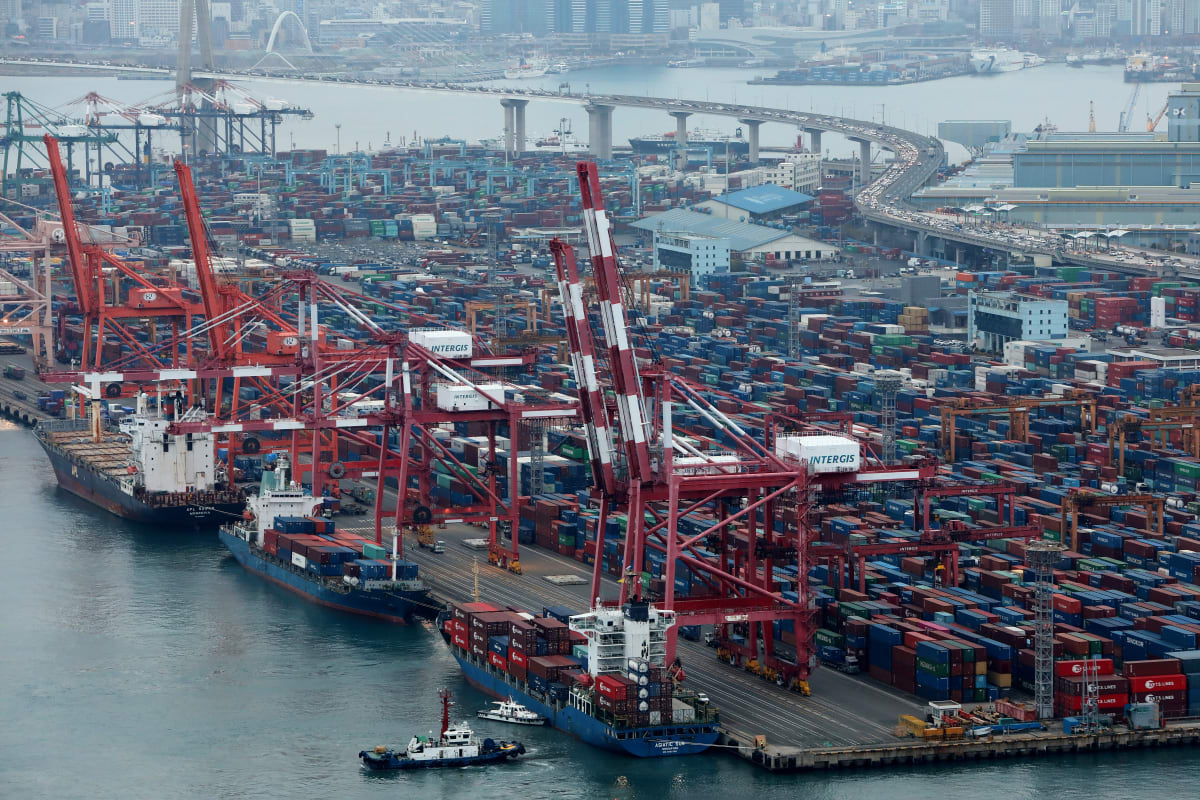
As the sixth-busiest port in the world, much of the city’s fate is linked to what happens down amongst the shipping containers. Busan’s port authority has pledged to cut greenhouse gas emissions by half come 2030 and reach zero emissions by 2050.
What to do with the council-owned port back here in Auckland has been a much-asked question during the campaign and mayoralty of Brown. Asset sales have been floated as well as enforcing traffic and emissions-mollifying tactics such as moving goods out from the port via rail rather than road.
Brown will be heading down to Port of Busan to see how things operate there, and presumably how they might be moving towards such lofty climate goals.
The Korean port’s plan currently takes two forms: a concrete and asphalt waste recycling project touted to cut waste by around 44 percent, and a ‘piezoelectric power generation system’. The latter is a set of harvesting modules beneath the port gates that can essentially capture the energy from the pressure and vibration of passing trucks for later use.
At the moment the power system is only at a prototype stage, but it’s projected that just one gate at the busy port harvesting energy from mechanical stress would gather enough electricity to power 125,000 Busan households per year.
Although Ports of Auckland doesn’t quite have the scale of its sister in Busan, they do share a similarly vital role in their respective country’s infrastructure. Busan’s port handles about 80 percent of the country’s container cargo.
Yet another similarity is the ownership model. The Port of Busan is operated by a publicly-owned company called Busan Port Authority, which was founded in 2004.
Operational roles in running the port are split across central and local government, with heavy work like new construction projects managed by Seoul and promotional activities handled by Busan.
It’s more division of labour than seen down at Auckland’s waterfront, where the council holds 100 percent of shares.
A floating city
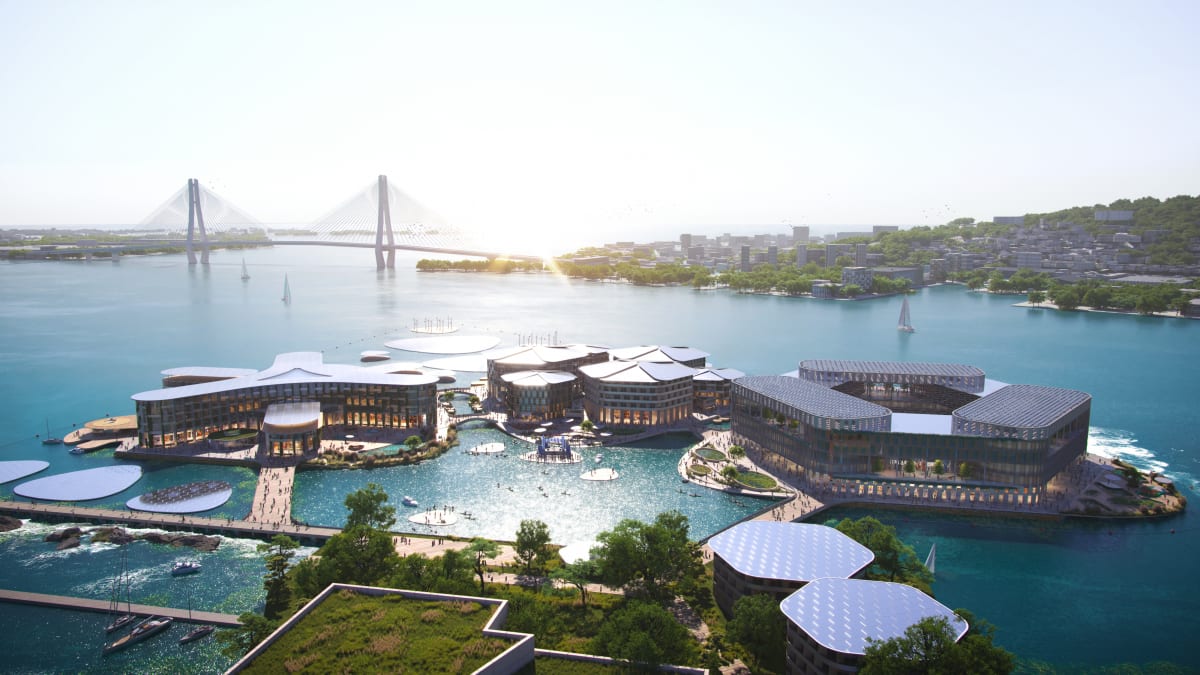
OCEANIX/BIG-Bjarke Ingels Group
On the agenda following the meeting of the mayors is a series of presentations showcasing some of the more weird and wonderful solutions cities are using to tackle climate change.
Chief among these is OCEANIX Busan, a futuristic city expansion that proposes solving issues of land shortages and sea level rise by building floating neighbourhoods on top of Busan’s harbour.
The floating city would consist of modular platforms connected by bridges and designed to house circular waste systems and urban agriculture. Each platform would be anchored to the seabed but could ultimately be moved if the area became unliveable.
It’s a blue sky kind of solution for a city that has dealt with increased rainfall in recent years, affecting the resilience of infrastructure. They are familiar problems for any visiting Aucklander.
But like the piezoelectric system at Ports of Busan, the floating city is still just an idea on paper.
An initial three platforms, which could house 12,000 people, have been signalled to be ready by 2025. Whether cities like Busan can move a significant chunk of their population out onto flood-proof floating suburbs before sea level rise causes significant issues remains the big question.
But for a city like Auckland, hemmed in between two large harbours and with a population willing to pay big bucks to live within earshot of breaking waves, the OCEANIX project is one to keep a close eye on.
And that will be the case for hundreds of millions of global citizens as well: according to UN-Habitat, two out of every five people in the world live within 100km of the coast, and 90 percent of mega cities worldwide are vulnerable to rising sea levels.
